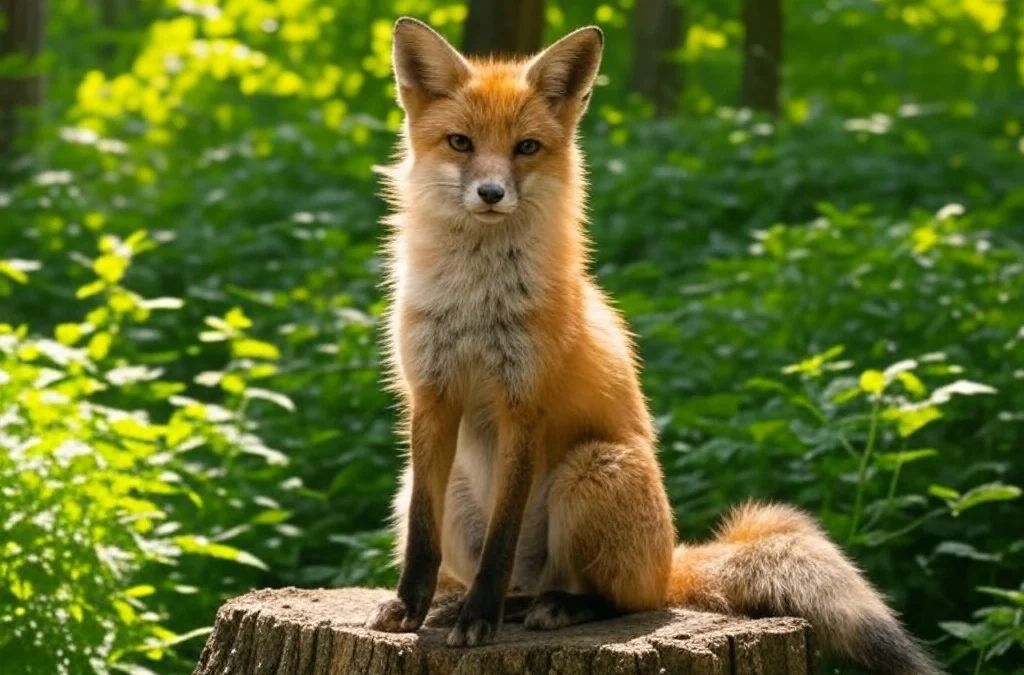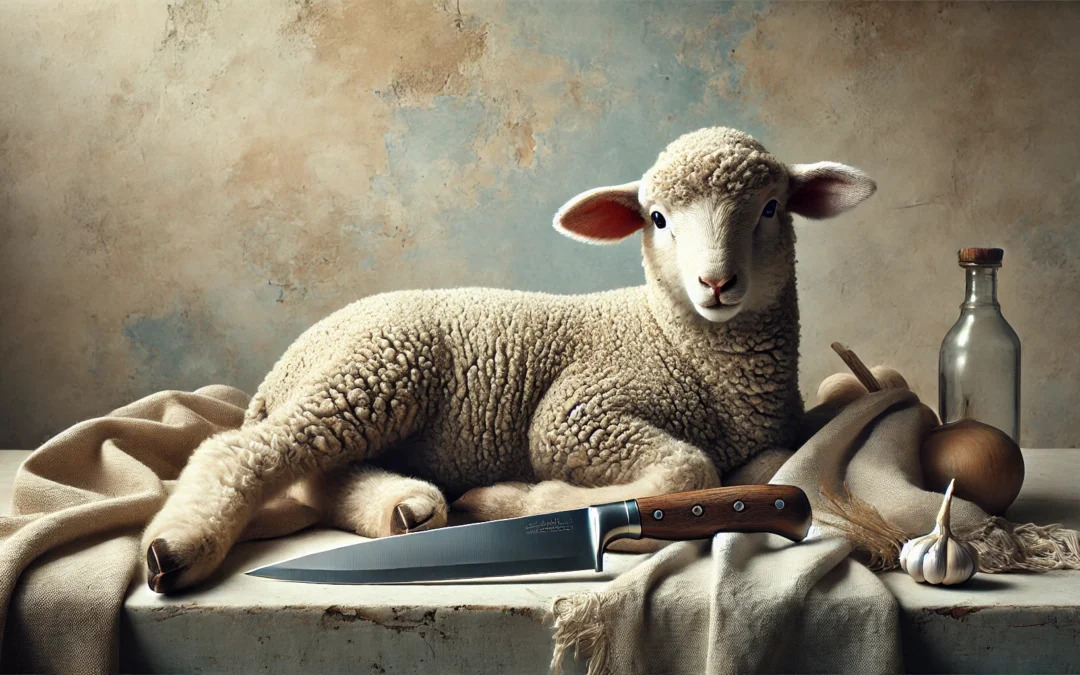Animal sacrifice has been a practice in many cultures and religions throughout history. It involves offering animals to gods or spirits as a way to seek blessings, protection, or forgiveness. While the idea of sacrificing animals may seem strange today, it was a deeply meaningful act for ancient people who believed it could maintain balance in the world or bring favor from the divine.
From the Aztec rituals in Mexico to the Vedic traditions in India, animal sacrifices took many different forms. Some involved large ceremonies with the community, while others were private or tied to specific events like harvests or royal ceremonies. This article explores 20 notable examples of animal sacrifice from different cultures around the world, helping to understand the role it played in shaping religious and cultural practices.
The Most Notable Examples of Animal Sacrifice
Animal sacrifice has been an important part of many civilizations and religions throughout history. It was often used as a way to communicate with gods, gain favor, or mark significant events. Below are some of the most well-known examples of animal sacrifice from various cultures around the world:
1. Aztec Human and Animal Sacrifice
In the Aztec civilization, both humans and animals were sacrificed to appease the gods. Animals like birds, jaguars, and dogs were offered to maintain balance in the cosmos. One major example is their sacrifice to Huitzilopochtli, the sun god, to ensure the sun would rise each day.
2. Ancient Greek Offerings to the Gods
The Greeks frequently sacrificed animals like bulls, sheep, and goats to honor their gods, such as Zeus and Athena. They believed these sacrifices would bring them divine protection. The meat from these offerings was often shared in a communal feast, making it a religious and social event.
3. Vedic Rituals in Ancient India
In ancient Hindu rituals, animal sacrifice was part of ceremonies to please the gods. The Ashvamedha Yagna, a horse sacrifice, was one of the most important, symbolizing the power and expansion of a king’s reign. As Hinduism evolved, many of these sacrifices became symbolic.
4. Islamic Eid al-Adha (Festival of Sacrifice)
Eid al-Adha is an important Islamic holiday where animals like sheep, goats, cows, and camels are sacrificed. This ritual honors the prophet Abraham’s willingness to sacrifice his son in obedience to God. The meat from the sacrifice is shared with family and the needy.
5. Jewish Temple Sacrifices
In ancient Judaism, sacrifices of sheep, goats, and doves took place in the Temple of Jerusalem. This practice was central to atonement rituals, with the animals offered as a way to cleanse sins. Sacrifices ceased after the destruction of the Second Temple.
6. Roman Sacrifices to Jupiter
The Romans sacrificed animals such as bulls, goats, and pigs to honor their gods, especially Jupiter. These rituals were performed to ensure divine favor. The liver of the sacrificed animal was often inspected by priests for signs from the gods.
7. Norse Blót Rituals
In Norse tradition, Blót rituals included sacrificing animals like horses, cows, and boars to gods like Odin and Thor. The goal of these sacrifices was to ensure good harvests, protection, and success in battle. Blót ceremonies also involved large feasts with the community.
8. Maya Animal Sacrifices
The Maya civilization performed sacrifices of animals like jaguars, birds, and dogs to appease their gods. These rituals were often conducted to bring rain or ensure victory in warfare. The Maya believed that animal sacrifice could bring balance to the world.
9. Celtic Rituals and Sacrifices
In ancient Celtic practices, bulls were often sacrificed during festivals like Samhain to honor the gods and ensure good harvests. These sacrifices played a significant role in marking seasonal changes and connecting people with the spiritual world.
10. African Vodou Rituals
In Vodou traditions, especially in Haiti and parts of Africa, animals like chickens, goats, and pigs are sacrificed to spirits called loa. The sacrifices bring blessings, healing, and protection to individuals or the community, and the animals are often consumed afterward.
11. Zulu Cattle Sacrifice
The Zulu people of South Africa practice cattle sacrifice, known as Ukweshwama, to honor ancestors and maintain harmony within the community. It’s also performed during important occasions such as weddings or the crowning of a king.
12. Inca Llama Sacrifices
The Inca civilization sacrificed llamas, especially white ones, to appease their gods. These sacrifices were particularly important during events like the emperor’s coronation or to ask for good weather and successful harvests.
13. Yoruba Rituals of West Africa
In Yoruba religion, animals such as goats and chickens are sacrificed to Orishas (deities) to seek protection, healing, and guidance. The blood is considered a link between the human and spiritual worlds, making the sacrifice a powerful religious act.
14. Ancient Egyptian Sacrifices to Ra
The ancient Egyptians sacrificed animals like bulls, goats, and birds to honor their gods, particularly Ra, the sun god. While animals were often sacrificed, cats, which were sacred in Egyptian culture, were revered and never harmed.
15. Tongan Pig Sacrifice
In Tonga (an island country in Polynesia, part of Oceania), pigs are traditionally offered in sacrifice to the gods and ancestors, often during important ceremonies like funerals or feasts. The sacrifice of pigs symbolizes respect and ensures the well-being of the community.
16. Sami Reindeer Sacrifices
The Sami people of northern Scandinavia practiced reindeer sacrifices to honor spirits and ensure success in hunting. The Sami believed these sacrifices kept harmony with nature and ensured protection from harmful spirits.
17. Caribbean Santería Sacrifices
In Santería, a religion blending West African and Catholic practices, chickens, goats, and other animals are sacrificed to the Orishas for health, guidance, and good fortune. The ritual is believed to connect practitioners with the spiritual realm.
18. Tibetan Buddhist Rituals
While Buddhists traditionally avoid harming animals, some Tibetan Buddhist practices involved symbolic animal sacrifices or offerings of butter sculptures shaped like animals. These offerings were meant to appease local spirits and maintain harmony.
19. Balinese Hindu Sacrifices
In Bali, animals like chickens and pigs are sacrificed during Hindu ceremonies to maintain cosmic balance. These sacrifices are made to honor both gods and demons, ensuring peace and prosperity for the community.
20. Nepal’s Gadhimai Festival
The Gadhimai Festival in Nepal is one of the largest animal sacrifice events in the world. Thousands of animals, such as buffalo and goats, are sacrificed to honor the goddess Gadhimai. The festival is believed to symbolize the triumph of good over evil.
What is Animal Sacrifice?
Animal sacrifice is the ritual practice of offering animals to gods or spirits in religious ceremonies. This act is performed to seek blessings, protection, forgiveness, or favor from divine beings. Many cultures across the world have relied on animal sacrifice to honor their gods, ask for good harvests, or celebrate significant occasions like festivals and rites of passage. Common animals used in these sacrifices include sheep, goats, cows, and birds. Although less common today, animal sacrifice once played a central role in the religious practices of many ancient civilizations.
Throughout history, animal sacrifice has been a key ritual in cultures such as the Greeks, Romans, and Aztecs, as well as in Hindu, Jewish, and Islamic traditions. These sacrifices often involved complex ceremonies where the animal’s life was offered to please the gods or to restore balance in the universe. In many cases, the meat of the sacrificed animal was shared in a communal meal, adding a social and symbolic element to the event. While the practice has significantly declined in modern times, it is still observed in certain cultural and religious celebrations, like the Islamic festival of Eid al-Adha.
The History and Origins of Animal Sacrifice
Animal sacrifice has deep roots in human history, with evidence of its practice dating back to ancient times. Early civilizations believed that offering animals to gods was a way to establish communication with the divine. From early hunter-gatherer societies to more structured civilizations like the Egyptians, Greeks, and Romans, the act of sacrificing animals was seen as a powerful gesture to gain favor or avert disaster. In many cases, it was also believed that the life force of the sacrificed animal could influence natural elements like rain, fertility, or protection from enemies.
These early sacrifices were not just about religious belief but also served to strengthen social bonds. For example, in Greek and Roman rituals, after the animal was sacrificed, the meat would be shared in a communal feast. This was an important social event, reinforcing connections within the community. The symbolism behind animal sacrifice reflected the idea that humans needed to maintain a balanced relationship with the gods to ensure the continued well-being of society.
Read also: 30 Best Moral Dilemma Examples
Types of Animals Used in Sacrifice
The type of animal used in sacrifice varied greatly depending on the culture, the occasion, and the deity being honored. In some traditions, the type of animal had a specific symbolic meaning. For example, in ancient Egypt, bulls were often sacrificed to honor gods like Osiris, as they were seen as symbols of strength and fertility. In other cultures, such as the Norse, horses were sacrificed to gods like Odin to ensure victory in battle or a successful harvest.
In Hinduism, cows are considered sacred and are not sacrificed, but in the ancient Vedic traditions, horses were sacrificed in royal ceremonies like the Ashvamedha Yagna, which symbolized the expansion of a king’s power. Similarly, in Islamic traditions, sheep, goats, and cows are sacrificed during Eid al-Adha to honor the story of Abraham’s willingness to sacrifice his son. The choice of animal was deeply connected to the values and religious beliefs of each culture.
Decline and Modern Practices of Animal Sacrifice
Over time, animal sacrifice has become less common, especially in modern religious practices. Many contemporary religions have moved away from literal sacrifices, favoring symbolic offerings or prayers instead. The decline of animal sacrifice is also tied to changes in societal values, particularly the growing emphasis on animal rights and ethical treatment.
However, some cultures and religions continue to practice animal sacrifice, particularly during important festivals and celebrations. For example, in Islam, Eid al-Adha remains a significant occasion where animals are sacrificed, and the meat is distributed to family, friends, and the less fortunate. Similarly, in Hindu Bali, animals are still sacrificed during major religious ceremonies to maintain cosmic balance. While the practice has evolved, its core purpose of seeking divine favor, blessings, or protection remains central in these traditions.
Read also: Top 20 Polygamy Examples & Definition
The Most Popular on BitGlint

40 Social Dilemma Examples in the World & Real Life
Social dilemmas are everywhere. They shape the choices we make at work, in our communities, and even on a global...

30 Favor Examples & Definition
Doing a favor means helping someone without expecting anything in return. It’s an act of kindness that can strengthen...

30 Naivety Examples & Definition
Naivety is something most people experience at some point in their lives. It often starts in childhood, but for some,...

20 Chronology Examples & Meaning
Chronology is something we use more than we realize. It shows up in conversations, in how we remember the past, and in...

30 Wishful Thinking Examples & Meaning
Wishful thinking is something we all do at some point. You hope things will turn out fine—even if there’s no real...

20 Examples of Gravity & What Gravity Really Is
Gravity is one of the most important forces in the universe, but many people don’t fully understand what it really is...

20 Examples of Secondary Consumers in the Food Chain
Secondary consumers are animals that eat other animals—usually herbivores that feed on plants. They’re an important...
Get Inspired with BitGlint
The Latest
30 Flow State Examples & Definition
Most people have felt it at some point — that rare moment when everything just clicks. You're working, moving, or thinking, and suddenly it's like the rest of the world fades out. You're focused, clear, and everything you're doing feels smooth and natural. That’s...

30 Cynicism Examples in Everyday Life & Definition
Cynicism is something most people have seen, heard, or even felt - but few stop to really think about what it means. It shows up in jokes, in conversations, and in quiet thoughts we don’t always say out loud. Some people wear it like armor. Others see it as honesty....
50 Examples of Square Things
Square things are part of everyday life, even if we don’t always think about them. From objects we use at home to tools, packaging, and design elements we see out in the world, the square shape is everywhere. It’s simple, balanced, and practical — which is exactly why...
30 Ironic Situations Examples & Definition
Irony is everywhere in everyday life. It happens when things turn out in a way that’s the exact opposite of what you’d expect. Sometimes it’s funny, sometimes it’s frustrating, and sometimes it makes you stop and think. In life, we come across ironic moments all the...

